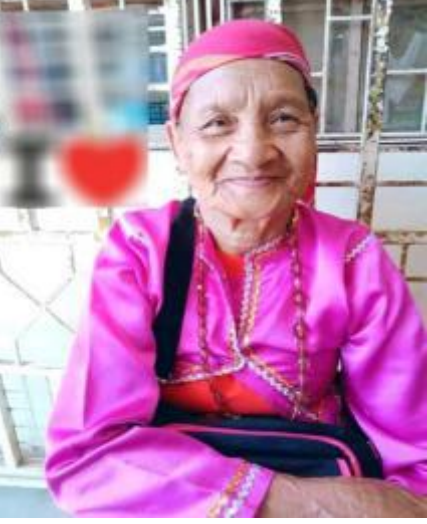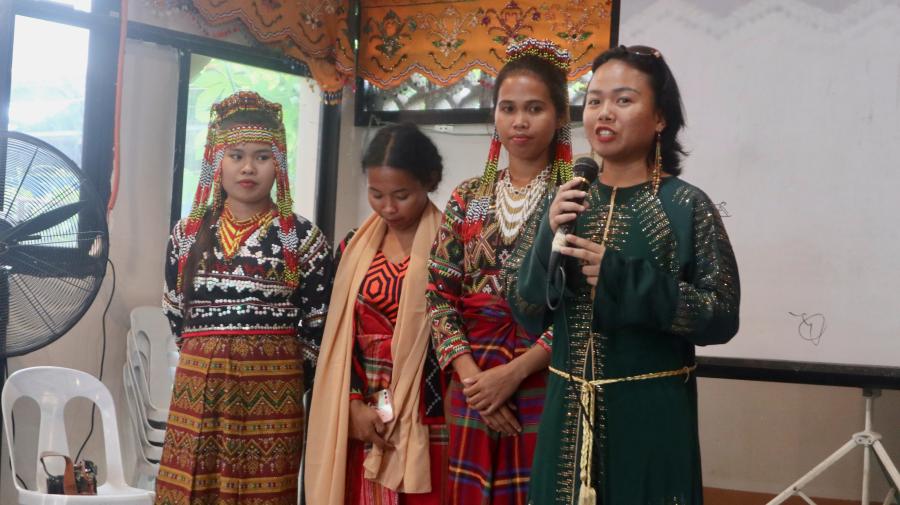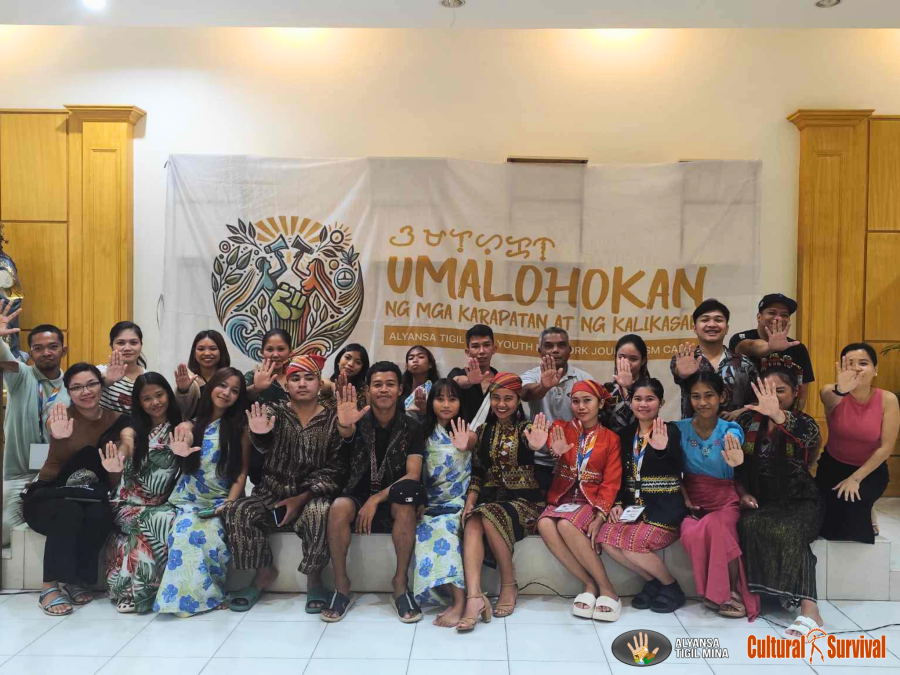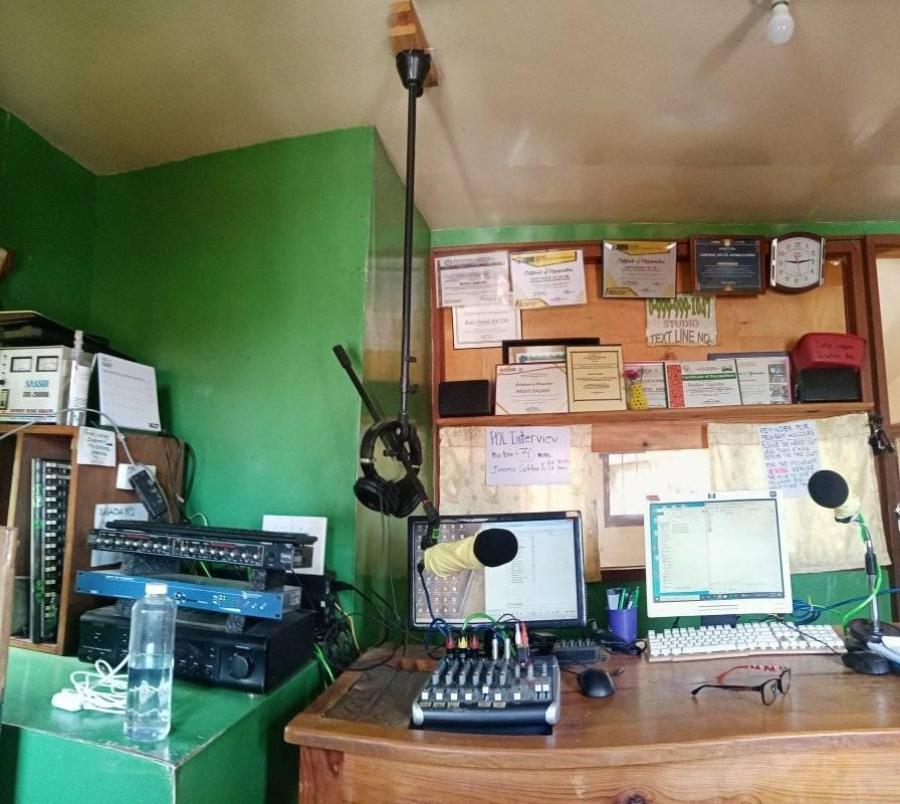
By Gerard Beelt Tiwow (CS Intern)
"Na ang buhay ng batang isinilang ay maging kasing tatag at kasing tibay nga punungkahoy at kagubatn at higit salahat ay lumaki ang bata na nakaugat sa lupa." (May the child that is born grow as strong and sturdy as the tree and the forest where it grows, and be rooted to the earth.)-- Teduray Prayer
The Teduray are an Indigenous People who live in Maguindanao Province, Bangsamoro Autonomous Region in Muslim Mindanao, Philippines. Teduray Peoples have a tradition that when a baby is born, the umbilical cord is placed in a biton (basket) and hung on a tree branch. The bearer of the cord whispers to the tree a prayer that the child being born may grow as strong and sturdy as the tree and the forest where it grows, and as rooted to the earth. This practice also known as semedang fused, the umbilical cord with a piece of ginger, and a chunk of charcoal is wrapped with a white cloth, and placed into the biton on a tree branch that face east.
Teduray Peoples have a spiritual belief that views every birth as two sets of twins, consisting of the baby and its umbilical cord. The baby and the cord each have lowoh (bodies) and remogor (souls), but only the baby has a ferenawa (breath-string). Unable to breathe, the umbilical cord twin does not survive after birth. During the labor process, the mother is assisted by a fanday (midwife) to ensure that she delivers safely. Today, the tradition of hanging a baby's umbilical cord onto a tree branch is no longer practiced, and has shifted to the planting of a tree instead.
The traditional role of fanday has changed dramatically in recent times. In 2008, the government imposed the Maternal, Newborn and Child Health and Nutrition Strategy (colloquially known as the No Home Birthing policy), which transferred the role traditionally occupied by Indigenous fanday to professional midwives. Enforcement of this policy means that people must go to a medical center to give birth, even if it is very far from their home, to avoid costly fines. Women who give birth at home and any persons assisting her face fines of up to 2,000 PHP (around $36). In the event of either the death of the mother or baby, the fanday will be fined an additional 5,000 PHP. If they can not pay the fine, they face up to six months in prison.


Picture of Fanday Dominador Asoh “Magaliyog” and Fanday Norma S. Morabong.
The policy has added a significant burden to Indigenous Peoples who are already economically disadvantaged and living in isolated areas, many of which have no road networks or readily available transportation and are lacking in access to medical facilities or equipment and professional health workers. Most critically, enforcement of the No Home Birthing policy means that Indigenous birthing traditions like that of the Teduray are likely to go extinct.
Some local Indigenous activists argue that the No Home Birthing policy is generally beneficial because it emphasizes the safety of both the child and the mother, responding to the need for birthing clinics or facilities with medical equipment and professional health workers and ensuring the well being of the mother and child. Registering for the official record of the newborn baby is also easier. However, by outlawing traditional birthing practices, the government policy is destroying the core value of Indigenous Peoples’ relationship with nature.
The Center of Indigenist Development in the Philippines (CIDev-Phil) is an Indigenous organization that focuses on ancestral domains and community development. According to Alim Bandara, executive officer of CIDev-Phil, they are not against the establishment of birthing centers with facilities and professional health workers in the community. In fact, they are encouraging local government officials to build birthing centers in remote communities so that they are accessible to the community.
Together with Cultural Survival, through a Keepers of the Earth Fund grant, in 2019 CIDev-Phil launched the project, “Documentation of Teduray Indigenous Knowledge System and Practice on Birthing in Relation to Trees and the Environment.” The project was overseen by the Kesefanangguwit Timuay (Justice and Governance), which is the political structure of the Teduray Peoples, while decisions were made by the Minted sa Inged, or Supreme Council, headed by the Timuay Labi (most senior). The aim of the project was to strengthen the beliefs and value system of the Teduray in defense and protection of trees, the forest, and the environment. By documenting their Indigenous birthing process and its spiritual values, the government’s No Home Birthing Policy will be contextualized and adapted into the Teduray Peoples’ cultural and traditional system.

An acceptance ritual (Tulak) at Mt. Firis, Batew Sacred ground, Guindulungan, Maguindanao. Observe that the footwear are taken on the dulang (prayer post) so that there is direct contact with Mother Earth, and a gesture of respect.
The project was officially launched in December 2019 with an opening tulak (ritual) by a beliyan (priest), followed by a briefing to selected Tribal leaders in December 2019. The data collection stage began in 2020, revolving around Key Informant Interviews with selected expert practitioners of the semedang fused and documentation of its basic beliefs and tenets, as well as changes in practices in recent times. The pandemic forced some major adjustments for the project’s implementation due to the restrictions and the prohibitions that the government imposed. Village boundaries were enforced by health monitoring checkpoints, despite the health protocols of vaccination and social distancing, which limited the team’s mobility and ability to execute the project, especially during the surge of the Delta variant. The data collection phase was finally completed in July 2021, after many delays.
Based on the data collected, the project created a Information and Education Campaign to reach out to assimilated Teduray communities to help them regain their lost Traditional Knowledge and encourage them to have more awareness and insights into their culture, and to conserve and preserve their natural heritage. This module was shared with the Indigenous communities, selected government officials, and the local academy to be used as a reference for further scientific research.

Denuded mountains in portion of Lifayen, Akal clan protected area.
To conclude the project, and in line with the vision to create a sustainable environment and fight climate change, in May 2021, CIDev-Phil, together with Teduray communities, planted trees at sacred sites and household bases in the villages. The planting of trees is viewed as a gesture of the Teduray People to give thanks to mother nature and a symbol of reconciliation for the negative imbalance caused by human activities. Areas that have been deforested for development will slowly return into their original state, with trees for future generations to hang their biton; a perfect harmony between preserving their culture and tradition and the planet. Strengthening the Indigenous knowledge system and practice is crucial for sustaining the hundreds and thousands of years of culture for future generations to come.
In 2020, the Center for Indigenist Development in the Philippines (CIDev-Phil) received a Keepers of the Earth Fund grant for the project,“Documenting Teduray Indigenous Knowledge Systems and Practices on Birthing in Relation to the Environment.” Keepers of the Earth Fund is an Indigenous-led fund within Cultural Survival, which is designed to support Indigenous Peoples’ community advocacy and development projects. Since 2017, we have supported 238 projects in 38 countries through small grants and wrap-around support. In 2022, we celebrated a milestone of $1 million provided in small grants directly to Indigenous communities, collectives, organizations, and traditional governments to support projects designed by them and in accordance with their Indigenous values.
Top photo: Mr. Jaime Morabong, a practitioner of semedang fused, with a biton that he hung.



